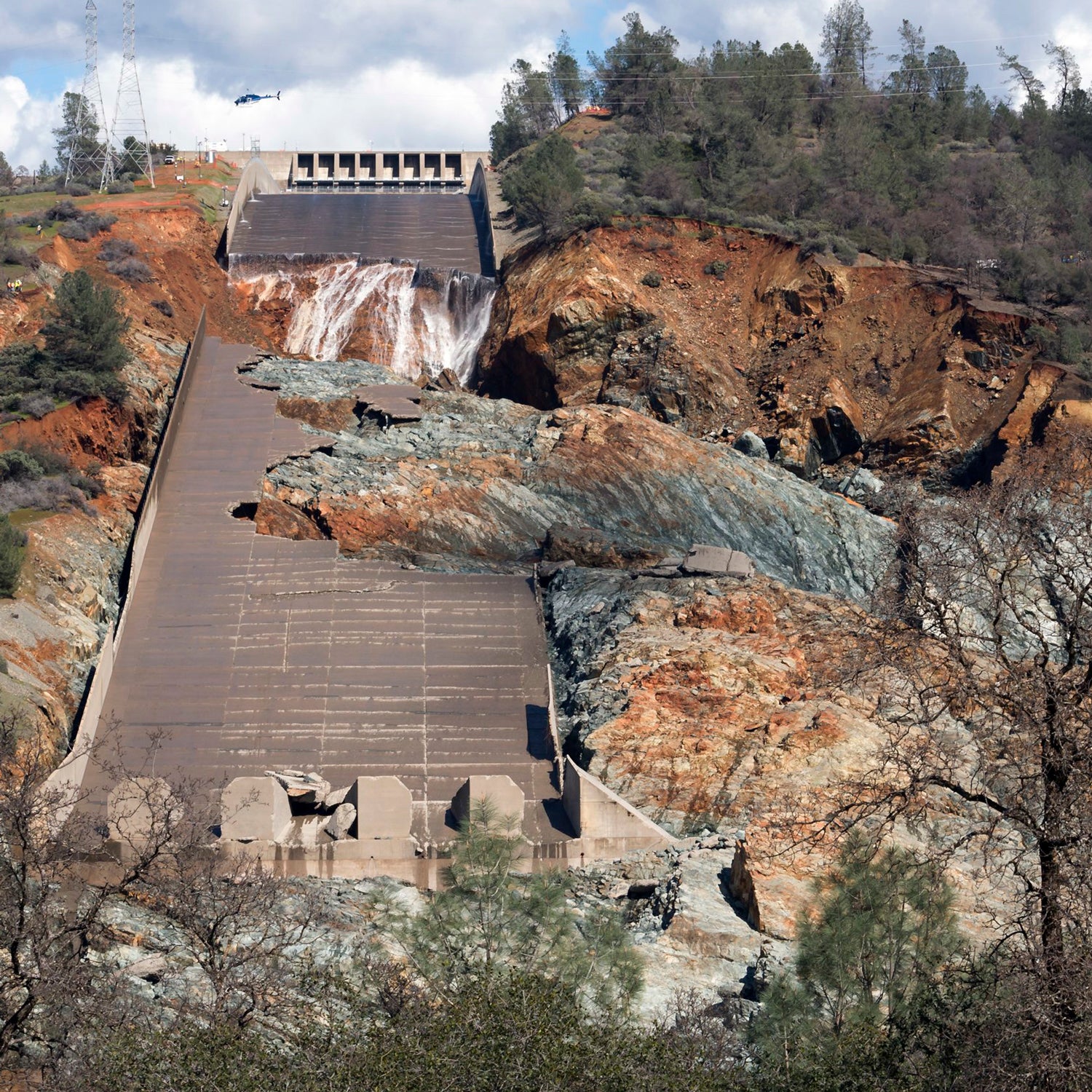As the cataracts of water flowing over the began to narrow and the threat of wide-scale flooding passed, a sense of normalcy has returned to the Northern California farming town. Most of the 16,000 residents went back to their homes, shops reopened, and officials finally had time to ponder other pressing issues—like, for instance, could the threat of the ?
Local officials hope so. In fact, they’re looking to start promoting the town as a tragedy-cum-success story to potential visitors. “It’s going to be, ‘Hey, remember the devastation last winter? Look what we’re doing now’,” says Carl Ribaudo, a tourism marketing specialist working with Butte County, which encompasses Oroville. “You turned on the Today Show and they showed the weather in L.A., San Francisco, and Oroville. It was crazy. The world knows where we are now,” says Nicole Johansson, a local marketing professional who sits on the board of the Butte County Tourism Business Improvement District, which oversees Oroville. “No one has ever cared about Oroville. Nobody has ever had any interest. We couldn’t have paid for all the exposure we got. Now people care!” Officials hope the exposure will entice visitors to this decidedly un-touristy corner of the state.
At first blush, the idea of driving 150 miles northeast of San Francisco—past the vineyards and rolling hills of Napa and away from the outdoor paradise that is Lake Tahoe—to vacation in Oroville seems a little laughable. Butte County isn’t on too many people’s bucket lists; the region didn’t even have a tourism business improvement district (a common way for localities to pool taxes and advertise local tourism) until a year ago. “They’ve never really been active in the tourism game,” Ribaudo says.
But disaster has a strange pull. Big, historic calamities, like and , still draw thousands of visitors every year, and even the sites of smaller-scale disasters, like the , attract crowds. The New Orleans wards ravaged by Katrina saw busloads of tourists cruise the cracked, grass-lined streets for years. There are guided tours of the area in Alaska. The site of the , where a failed Pennsylvania dam released 20 million gallons of water into nearby Johnstown, killing over 2,000 settlers, is a popular attraction in Cambria County.
Why not Oroville?
Lake Oroville is a prime angling area that already attracts a million visitors a year and has hosted pro bass fishing contests in the past. Nearby Chico is home to the Sierra Nevada Brewing Company and hosts local outdoor music festivals. California’s gold rush country, in the foothills, is a quick drive away. “What Oroville really is, is a gateway to a national-caliber recreation area,” Ribaudo says. “In the same way there are other gateways to national parks.”
Plus, the whole dam affair was high drama. After five years of drought—when laid bare California’s historic water problems—the clouds opened up this winter and the lake level “skyrocketed” at an incredible clip. By early February, the spillways designed to prevent overflooding couldn’t keep up. The emergency spillway threatened to collapse and send a 30-foot wall of water churning into the Feather River and deluge towns downstream. It made for great segments on the national news. (However, the story had a happy ending—a challenge for TV producers to sell to viewers—as the dam remains sound. Assuming no more once-in-a-decade storms appear this spring, emergency crews are .)
There’s a term for this type of morbid fascination with disaster areas: dark tourism. “People have always and will always hold a fascination with death and the moment of mortality,” says professor Philip Stone of the University of Central Lancashire, in England, who runs the university’s . Whole books have been written about why people visit sites of disasters, but Stone figures a spot like Oroville “illustrates our fragility in a fragmented world that appears to spin ever faster.”
In the 2000 book Dark Tourism, John Lennon (not that John Lennon), one of the fathers of dark tourism research, presents a litany of modern dark tourism spots, including historic battlefields and . These places have become “modern pilgrimage sites,” or 21st century versions of the long journeys people undertook in the middle ages to visit the burial sites of saints and other holy ones, Lennon says. A whole “memorialization industry” has sprung up, Stone says, where some of the worst atrocities in modern history are “consumed as tourist experiences, and where death and remembrance are packaged-up into commodities for the modern tourism industry.”
, Stone acknowledges. But there’s nothing inherently wrong with paying reverence to the dead and our “difficult heritage” by visiting somewhere like the Anne Frank House, he says, or examining your own mortality on a trip to a (near) disaster site.
And in the case of Oroville, the community could use some extra tourism dollars. It was never exactly a rich part of the world and the disaster destroyed some facilities along the lake, including the main boat launch. Rebuilding and overcoming would part of the theme, Ribaudo says. “I kind of liken it to Yellowstone burning down,” or the , he says. “People were interested in watching them come back.” He hopes that rebuilding efforts will be far enough along by the summer to promote the work to potential visitors. Johansson, the local tourism official and a big city transplant to idyllic Oroville, is convinced the push will work.
“Now the world knows what we have here,” she says. “It’s undiscovered. If you’re an outdoorsman who isn’t afraid to venture off the beaten trail and take your Subaru wherever it can go, Oroville is just one of those untapped gems.”


